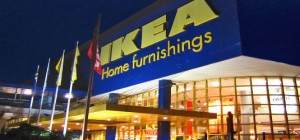IKEA is admirable for its progressive, innovative, and strong business strategy and there are several key reasons for their success. The economist accredits their success to “thrift [being at] the core of IKEA’s corporate culture,” and I agree because operationally, they have refined their transformation process by reducing costs in areas such as distribution. As a result, the company reaches the efficiency stage on the road to sustainability by saving corporate dollars.
However, I believe that IKEA’s achievements result from the lack of discrepancy between internal company culture of “thriftiness” and their value proposition. The company epitomizes disruptive innovation by making a product accessible and affordable to the majority. Their point of difference of DIY and buy-take home convenience parallels the efficiency IKEA strives for in its production line.
I believe that the company maximizes the amount of value generated for its target market because all strategic decisions either for long-term growth or operations that reflect their “thrifty” philosophy will benefit consumers. For instance, “designers found a way to pack [products]… that shaved $135 from the price tag.” This improves the financial gain to customers as well IKEA’s ability to maintain introducing new models and styles, two important factors that IKEA relies on for brand marketing and positioning.


